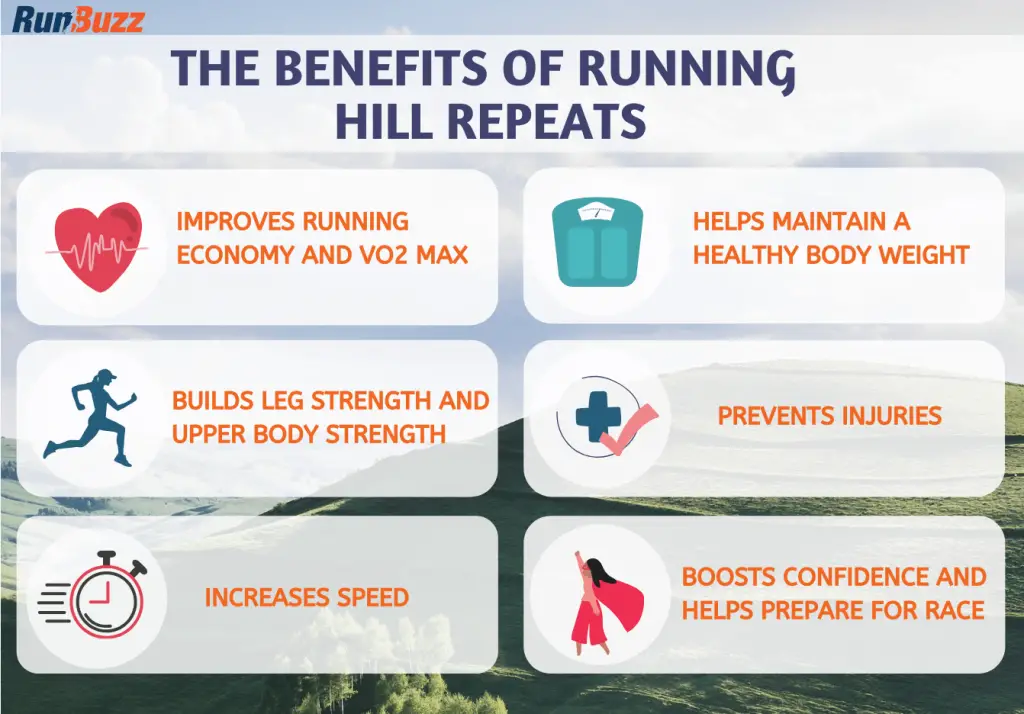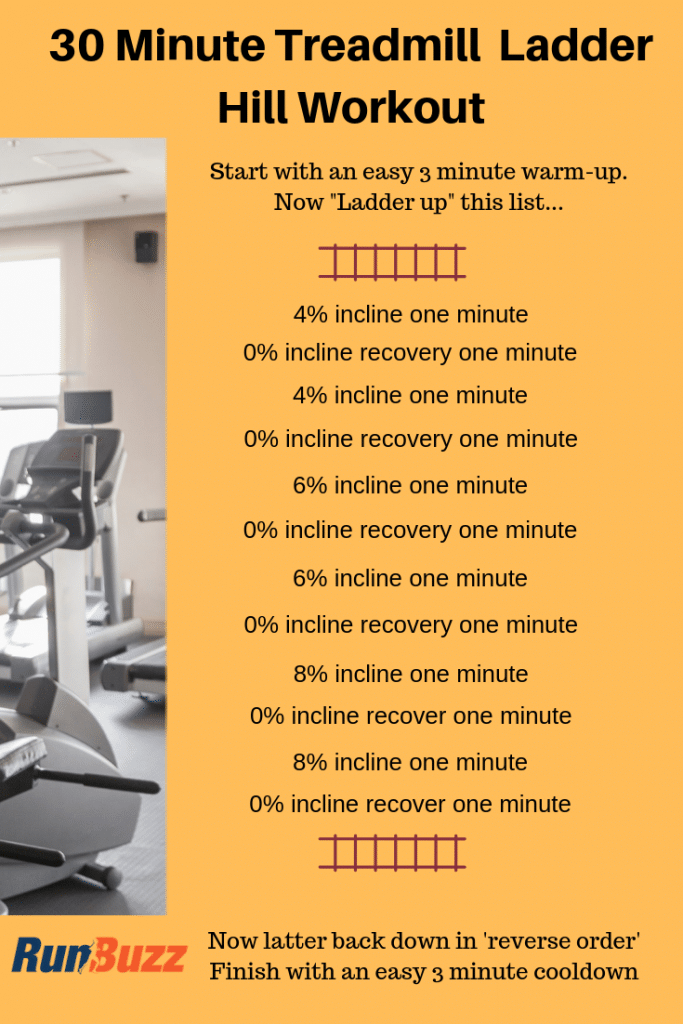Hill repeats are a curse for many runners all around the world, but what if we told you that running up hills – repeatedly – could make you a faster and stronger runner? It may sound daunting now, but with a little bit of guidance from everyone here at Runbuzz, we can get you on the path to be a better runner in no time!
What are Hill Repeats?
Runner lingo can be overwhelming and confusing at times, but luckily the term “hill repeats” is pretty straightforward! In the most basic terms, hill repeats are running up a challenging hill, jogging or walking back down the hill and then repeating. Sounds easy right? Well there’s a lot more that goes into it and we’ll lay out a step by step guide for you to follow so you can become the best runner you can be!
Why Should I Repeatedly Run Hills?
Imagine you are on a hike, walking up a steep incline, and you can feel your leg muscles getting tired. This is because hills are a form of resistance training! This resistance, when paired with your running, works the same muscles as if you were sprinting without having to reach your top speed. This allows for you to train your muscles to be faster without actually running at your max speed for long periods of time.
Doing hill repeats also strengthens all the other important muscles in your legs such as the calves, hamstrings, glutes and quads, in addition to helping the Achilles’ tendon and hamstrings. The varying intensity in your workouts is always a good thing and hill repeats offer a high-intensity alternative.
Running Doesn’t Have to be Boring
Ever get bored running on the same path and then your run just doesn’t seem like it went very well? Hill repeats are also a great way to break up your workout routine and add something new! Instead of running on that same, flat, neighborhood sidewalk, try finding a trail or a park that has a decently sized hill and give yourself the challenge of running up it! This not only stimulates the mind with a change of scenery, it also stimulates your muscles that have gotten used to running the same route every time.
What are the Benefits of Running Hill Repeats?

One of the most important benefits of doing hill repeats is for your running longevity. Would you rather constantly run as fast as you can every single run or gradually build your strength so your muscles and bones have time to adapt? Your answer should be the latter. If you were to go out and run as fast as you could every single time, you would most likely end up with an injury that could not only sideline you for months, but could end up making you not able to run for the rest of your life. Performing hill repeats strengthens all the major muscles along your legs and this gradual build-up allows you to continue running your entire life with less risk of injury.
6 Benefits of Running Hill Repeats
- Improves Running Economy and Aerobic Capacity (VO2 Max)
The better your running economy, the more efficiently your body uses oxygen, the better your VO2 Max and running performance in general.
- Strengthens Legs and Builds Upper Body Strength
Both uphill and downhill repeats is a great strength exercise. It helps improve your running performance by strengthening your glutes, hamstrings, calves, and quads. Heal repeats also engage the core and boost your upper body strength.
- Increases Speed
The muscles you use to run hills are the same you use when you do sprints. Therefore, by strengthening muscles, you can improve your overall running speed.
- Increases Your Fat-Burning Potential
By adding intensity when running uphill, you can increase the calorie burn and improve weight management.
- Prevents Injuries
When you train your leg muscles to perform at different levels of incline, you reduce the risk of suffering from running-related injuries.
- Confidence Boost and Race Preparation
Almost every race has a hill, therefore, running hills can help you boost confidence and prepare better for the race.
Now that you know what hill repeats are and why you should be doing them, let’s get into how to run them!
How Do I Run Hill Repeats?
Before you do any hill training, make sure you have a good running base where you are running at least three times a week consistently for about two months. You also want to do a ten to fifteen minute warm-up of light jogging before starting any hill workout. Once you’re all warmed up, we can get started!
- You want the hill to be about 200 meters long with an incline that isn’t too steep, about a 4-10% grade will do.
- To avoid becoming overwhelmed with the size of the hill, you want to look about fifteen feet in front of you instead of at the top of the hill. Looking at the top makes you think about how much distance you have left to go and how hard the workout is instead of focusing on your form and speed.
- Speaking of speed, you’ll want to run up the hill as fast as you can while being able to maintain the same effort the entire time and keep good form. You don’t want to start out sprinting at the bottom of the hill only to burn out and have to walk before you reach the top.
- When you get to the top, your legs should be tired, and you should be breathing heavily.
- Turn around and either walk or jog back down the hill for recovery.
- Beginners should repeat this three times, adding on another repeat every week for up to four weeks. More advanced runners can start with six repeats and increase once per week until they reach a max of ten.
It is generally advised to only do these kinds of workouts a maximum of once a week in lieu of other speed workouts so you don’t end up with an injury and your body has time to recover from the high intensity.
How Can I Maintain Form While Running Hills?
Now that you know the basics of how to run hill repeats, let’s talk about how to maintain your running form while going up that hill. Often times when you are walking up a hill, you’ll have the tendency to take big steps and maybe lean forward or use your hands to push off on your legs. Obviously, we don’t want you doing that while you’re running!
- Take shorter strides and more steps instead of long strides and fewer steps that use more energy going uphill.
- You don’t want to lean forward too much. You want a slight lean but not so much so that your hip flexors can’t properly bring your knees up.
- Really engage the hip flexors in bringing the knees up high and pushing off the pavement.
- Arms should be at a 90-degree angle and swinging back and forth, not out to the sides.
- On the way back down (if you’re running), you don’t want to lean too far back as that applies more braking power to your body. This makes your body use more energy going downhill when you should be using gravity and the momentum of going downhill to get a little increase in speed.
- Always run relaxed, but in control at all times.
How Can I Simulate Running Hill Repeats on a Treadmill?
Most runners hate running on the treadmill so much it’s garnered the nickname of “dreadmill” but sometimes we don’t have a choice because the weather is too bad outside or maybe we just don’t have time to drive to that favorite running spot. Doing hill repeats on a treadmill does come with a few benefits however; you can really dial in the exact incline you need for your training and you can’t see the daunting hill in front of you. So what do you need to do if you need, or even want, to do hill repeats on a treadmill?
- Just like running hill repeats outside, you will want to do a quick ten to fifteen minute warm up before adjusting the incline.
- As a general rule, a 1% incline is about the same as running outside on a flat surface.
- If you’re walking, you can have your incline be as high as 10%.
- If you want a steady workout the 4-6% will do the trick.
- If you prefer to do more intense intervals of hills and flat then ramping the incline up to 6-10% for a short amount of time will give you a great, speedy workout.
- For the “downhill” recovery sections you’ll want to reduce the incline back to 0% and slow down your pace so your body can get a brief rest before the next incline!

Now that you know all about running hill repeats it’s time to put it all into practice! Go to that scenic park with a good hill and get in some leg burning exercise! Register for that race that goes through beautiful mountains! Most of all, have fun and run safe!
- About the Author
- Latest Posts

Steve Carmichael is a running coach, sports performance coach, nutrition coach and has been a recreational runner for over 18 years. Steve holds multiple certifications as a certified running coach through the RRCA and USA Track and Field as well as he is a NASM certified personal trainer, and PN1-L1 certified nutrition coach.
Steve has been coaching since 2010 and has helped thousands of runners online and in the Central Ohio area maximize performance and run injury-free.
Steve is the founder of RunBuzz and Run For Performance.com. If you are interested in working with Steve though his online running and strength coaching services, feel free to reach out.

